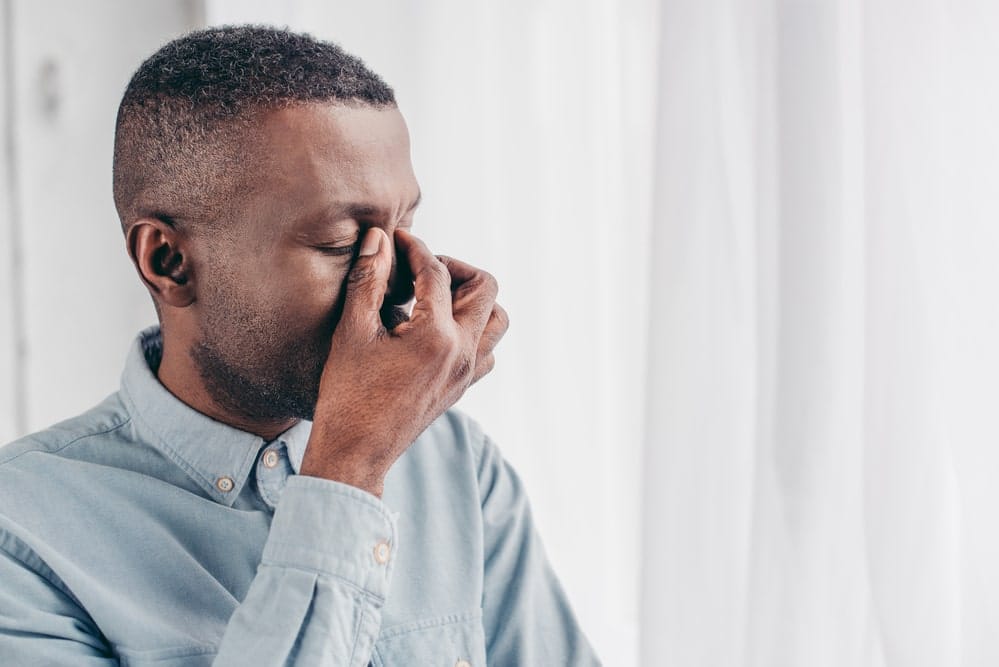You may experience red, irritated eyes for various reasons, such as high pollen counts, sleep deprivation, or even a stray eyelash. However, red eyes are often the primary symptom of a condition known as pink eye, or conjunctivitis.
While many cases of pink eye resolve on their own, the associated symptoms can be uncomfortable. Fortunately, there are several home remedies to alleviate it.
What Is Pink Eye?
Pink eye is characterized by inflammation of the conjunctiva, a transparent, thin membrane that protects the inner eyelid and the whites of the eyes, also known as the sclera. The conjunctiva plays a role in tear production, which helps eliminate dirt, germs, and other irritants from the eyes. When the conjunctiva becomes inflamed due to factors like allergies, infections, or irritants, it results in conjunctivitis.
Symptoms
While there are several types of pink eye, they share common symptoms:
- Pink or red discoloration of the sclera
- Swelling of the eyelid or conjunctiva
- Itching or burning sensation
- Mucus or pus discharge
- Crusting on eyelids and lashes, particularly upon waking
- Excessive tearing
- Sensation of foreign objects in the eye
- Discomfort when wearing contact lenses
Causes
Most cases of pink eye occur due to infection and inflammation caused by viruses or bacteria entering the eye. Various transmission methods can lead to this, including direct contact with bodily fluids like saliva or mucus from an infected person, as well as germs migrating from other parts of the body, especially the sinuses during upper respiratory infections.
Wearing contact lenses also poses a higher risk of eye infections if not properly cleaned.
Viral vs. Bacterial Pink Eye
Pink eye can be caused by several virus and bacteria strains, with symptoms primarily resembling one another. However, distinguishing between viral and bacterial conjunctivitis is essential for appropriate treatment:
- Viral pink eye typically coincides with upper respiratory infections like colds or flu, usually beginning in one eye and spreading to the other. The discharge is thin and watery. There is no specific cure, and the infection typically resolves within a week.
- Bacterial pink eye often exhibits a thick, pus-like discharge, which may cause eyelashes or eyelids to stick together. This form of conjunctivitis often remains localized to one eye. Treatment may involve antibiotic eye drops or ointment to eliminate the infection.
Managing Pink Eye at Home
While awaiting the resolution of viral infections or the effectiveness of antibiotics, you can alleviate pink eye symptoms with these home remedies:
- Take over-the-counter pain medication: Nonsteroidal anti-inflammatory drugs (NSAIDs) like ibuprofen can help reduce pain associated with conjunctival swelling. If NSAIDs are not suitable due to allergies or health conditions, acetaminophen may provide relief.
- Use artificial tears: These can alleviate itching or burning sensations and potentially flush out irritants. Ensure to use plain saline solution rather than medicated eye drops designed to reduce redness, as these can exacerbate symptoms.
- Apply cool compresses: Reducing inflammation can significantly improve symptoms. Cold compresses constrict blood vessels, reducing fluid flow and inflammation. You can use a clean washcloth dampened with cold water and place it over your eyes for relief. Conversely, you can use a washcloth soaked in hot water to clean away dried pus from your eyelids and eyelashes if necessary.
- Complete your antibiotic course: If prescribed antibiotics, take them as directed until you finish the entire course, even if your symptoms improve. Prematurely discontinuing antibiotics may lead to a resurgence of the infection, potentially more challenging to treat.
- Avoid foreign objects: It’s best to refrain from wearing contact lenses or applying eye makeup until the sclera returns to its normal color, and discharge has cleared. Dispose of or sanitize products used leading up to the infection to prevent germ transmission.
Is Visine a Suitable Remedy For Pink Eye?
No, it’s not recommended to use red-reducing eye drops like Visine for pink eye, regardless of the type of pink eye you may have. These eye drops can be quite uncomfortable when dealing with an infection and might exacerbate your symptoms. If you have an infection in one eye, take precautions not to transfer it to the other eye or spread it to others in public.
Prevent Its Spread
Pink eye, or conjunctivitis, is exceptionally contagious. To prevent its spread, adhering to basic hygiene practices is crucial:
- Change pillowcases and bed sheets daily.
- Use a fresh towel each day.
- Frequent handwashing is essential, particularly after touching your eyes.
- Avoid wearing contact lenses until your eyes have fully recovered.
- Refrain from sharing any items that come into contact with your eyes.
How Long Is Pink Eye Contagious?
Pink eye resulting from a bacterial infection can be contagious to others from the moment symptoms manifest until there’s no more discharge from the eye or up to 24 hours after starting antibiotic treatment. On the other hand, viral conjunctivitis is typically contagious even before symptoms show and can continue to be so as long as the symptoms persist.
How Long Does It Last?
Typically, the infection resolves on its own within 7 to 14 days without any treatment and no lasting effects. However, in certain instances, viral conjunctivitis may persist for 2 to 3 weeks or longer. For more severe forms of conjunctivitis, a physician can provide antiviral medication as part of the treatment.

